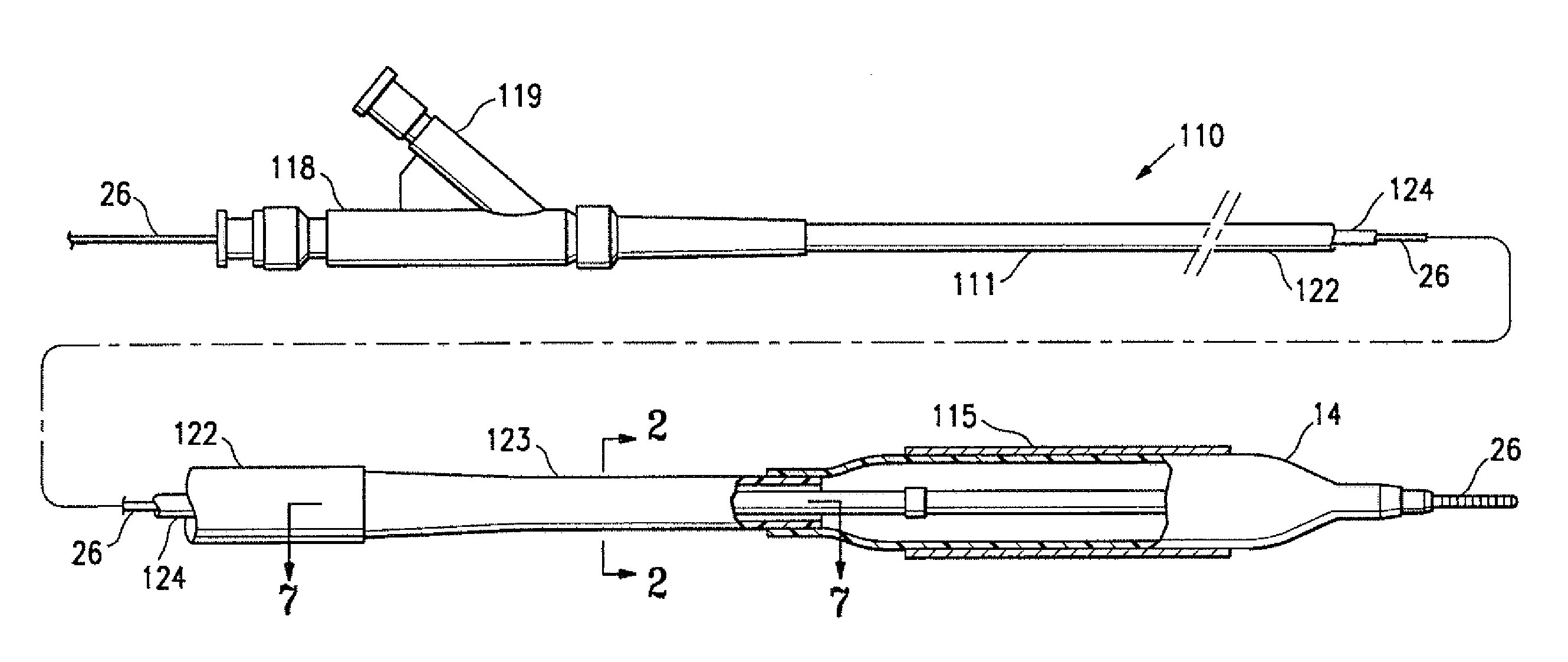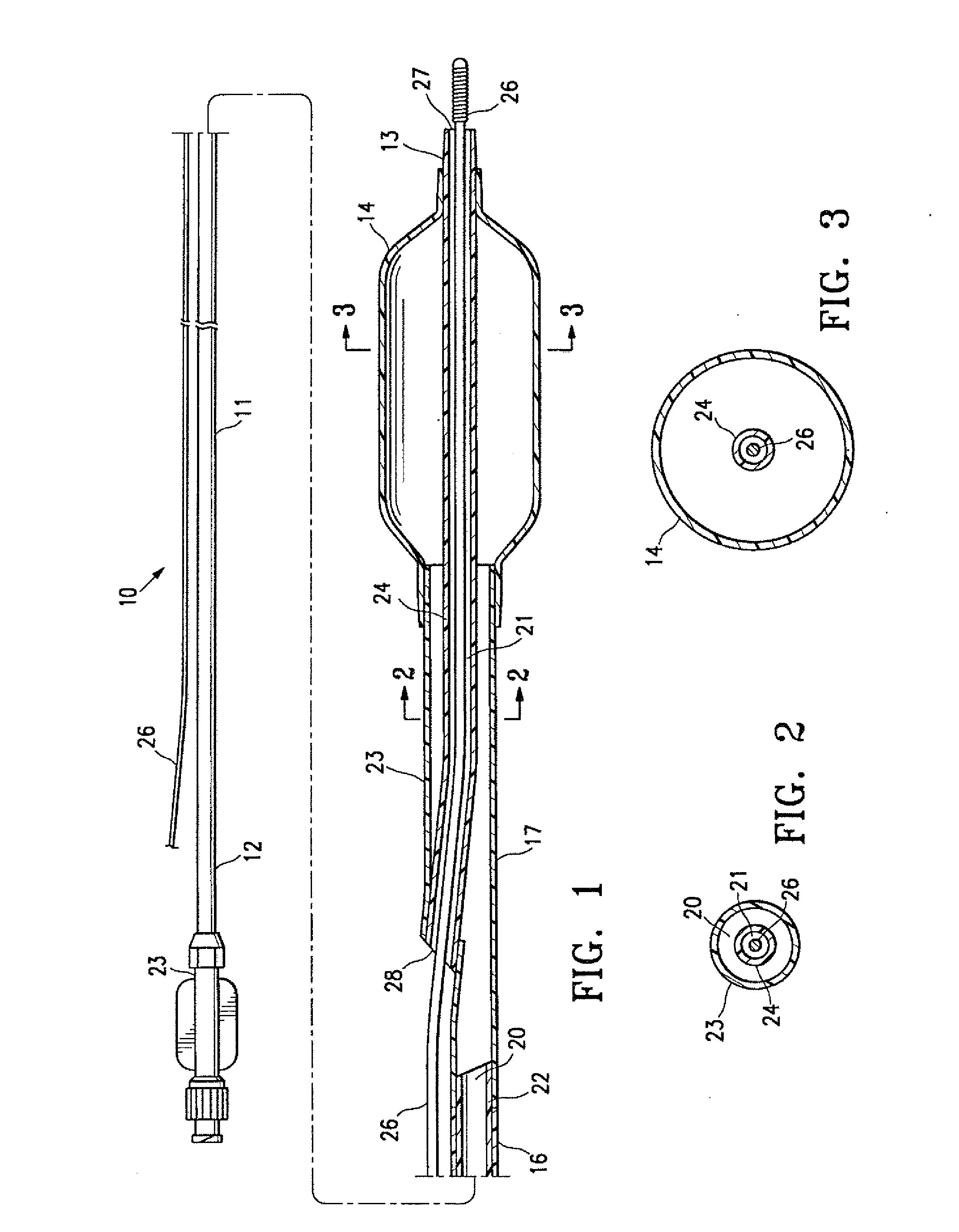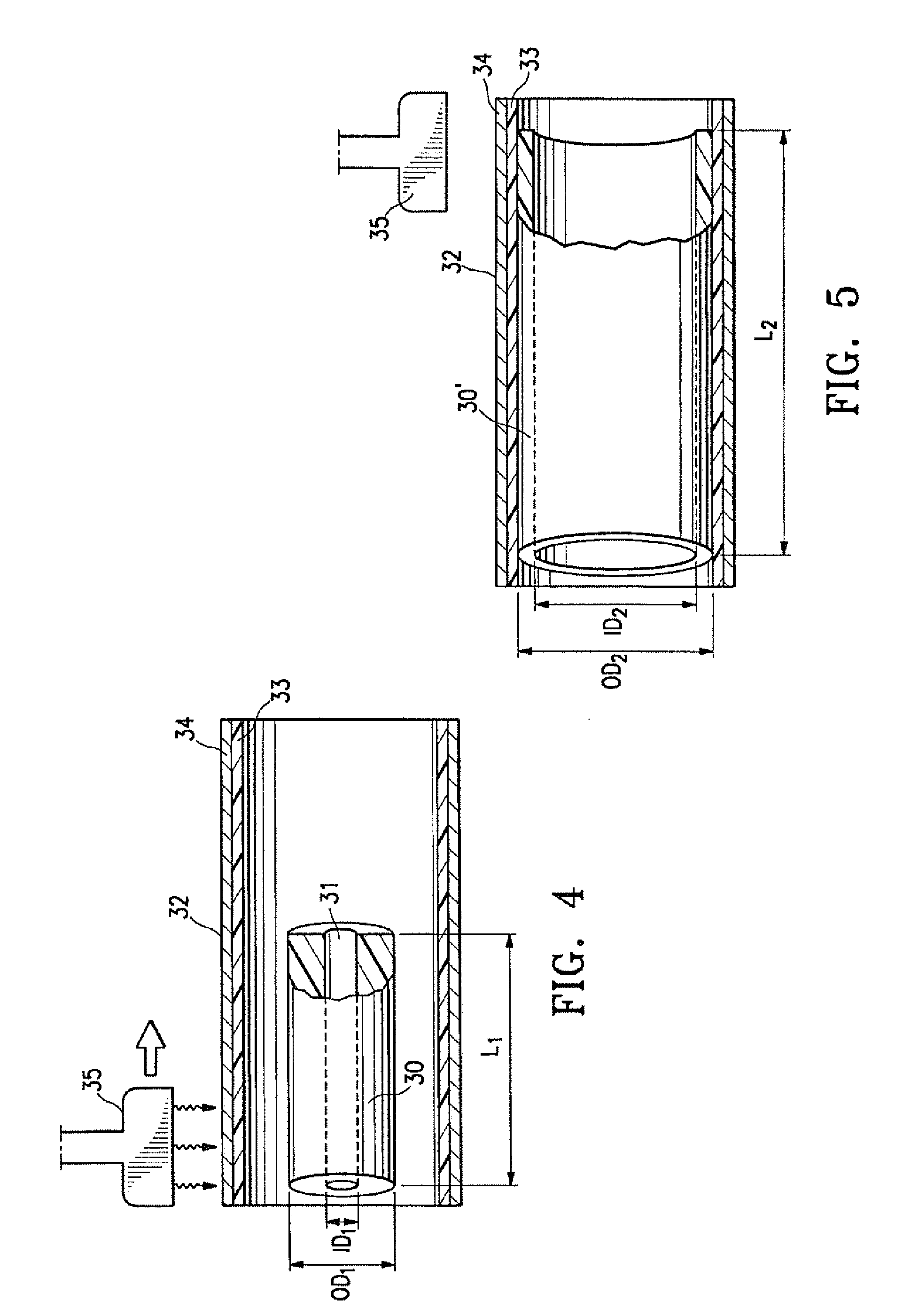Balloon catheter shaft having high strength and flexibility
a balloon catheter and high-flexibility technology, applied in the field of intracorporeal devices, can solve the problems that the orientation does not significantly increase the bending stiffness of the tubular member, and achieve the effects of low bending stiffness, high rupture pressure, and high tensile strength
- Summary
- Abstract
- Description
- Claims
- Application Information
AI Technical Summary
Benefits of technology
Problems solved by technology
Method used
Image
Examples
example 1
[0079]PEBAX 63D was used to extrude four sets of multiple tubing samples (N=5) having an extruded inner diameter (ID) of about 0.005 inches, and an extruded outer diameter (OD) ranging from about 0.0217 inches to about 0.0264 inches. The extruded tubing was placed inside a stainless steel capture tube having a Teflon liner with an ID of about 0.034 inches, and radially and axially expanded therein at an elevated temperature. Specifically, a vertical hot air necking apparatus was used to pressurize the tubing with pressurized air at about 500 psi and to simultaneously lengthen the tubing with an axial load pulling on one end of the tubing, while the tubing was heated within the capture tube using a heating nozzle traversing along the outside of the capture tube at a set point of about 385° F. (196° C.) (the temperature within the inner chamber of the capture tube is typically less than the set point, and depends upon factors such as the nozzle temperature set point, the nozzle speed,...
example 2
[0081]Equation 3 was used to predict the external weight values required to make a variable outer diameter, constant inner diameter tubular member such as the tapered biaxially oriented tubular member 123 of FIG. 7. The predicted external weight values (using Eq. 3) are tabulated in Table 2 along with the desired as-extruded and final expanded dimensions, the calculated stretch percentages (using Eq. 1), and the calculated total axial stress values (using Eq. 2). In the example set forth in Table 2, the as-expanded outer diameter and wall thickness is to be held constant over the first 20 cm, and then increased linearly over the remaining length. The internal pressure during the biaxial expansion tapering procedure was constant at 475 psi.
TABLE 2AxialAxialStressExternalLocationID1OD1ID2StretchS (total)Weight(cm)(cm)(cm)(cm)OD2 (cm)(%)(psi)(grams)0 to 200.0160.0740.0730.0838229.67956560.6220.0160.0740.0730.0848197.86433487.0240.0160.0740.0730.0858171.25272423.9260.0160.0740.0730.0868...
example 3
[0083]To make a variable outer diameter, variable inner diameter, constant wall thickness tubular member such as the tapered biaxially oriented tubular member 135 of FIG. 10, the same conditions as in Example 2 are used, but the external weight decreases by a smaller amount from the 20 cm to the 40 cm axial location. Specifically, to maintain a constant wall thickness of 0.004 inches (0.01 cm) as the outer diameter of the tube increases as in Example 2 from 0.0838 to 0.0939 cm, the axial stretch percentage, total stress, and external weight decrease as set forth in Table 3.
TABLE 3AxialAxialStressExternalLocationStretchS (total)Weight(cm)(%)(psi)(grams)0 to 20229.67956560.622225.47747547.124221.47547533.726217.47353520.428213.57166507.430209.76986494.432206.06812481.0634202.36644468.936198.86481456.338195.46324443.840192.06172431.4
[0084]The bending moment of inertia (I) can be calculated using the engineering formula for a hollow cylindrical beam, I=(3.14159 / 64).times.(0D24−ID24). FI...
PUM
| Property | Measurement | Unit |
|---|---|---|
| inner diameter | aaaaa | aaaaa |
| inner diameter | aaaaa | aaaaa |
| rupture pressure | aaaaa | aaaaa |
Abstract
Description
Claims
Application Information
 Login to View More
Login to View More - R&D
- Intellectual Property
- Life Sciences
- Materials
- Tech Scout
- Unparalleled Data Quality
- Higher Quality Content
- 60% Fewer Hallucinations
Browse by: Latest US Patents, China's latest patents, Technical Efficacy Thesaurus, Application Domain, Technology Topic, Popular Technical Reports.
© 2025 PatSnap. All rights reserved.Legal|Privacy policy|Modern Slavery Act Transparency Statement|Sitemap|About US| Contact US: help@patsnap.com



